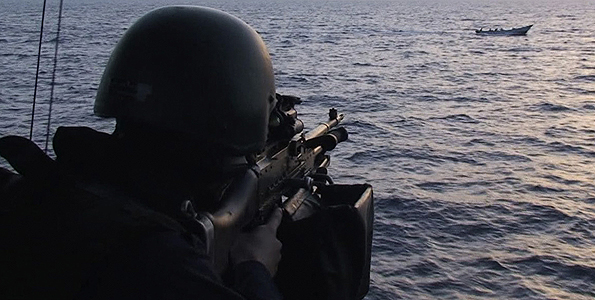Attacks at 'all time high'
Pirate attacks along the African coast and in the Indian Ocean have reached an all-time high, a survey reveals. The report shows that drug-crazed, AK47-toting gangs are dodging the naval patrols in their former hunting ground: the Gulf of Aden.
Over the last three months attacks are up by 60 per cent on the same time last year, according to maritime security consultants Drum Cussac.
Piracy activity in the Gulf of Aden has dropped dramatically, while activity in the Indian Ocean and along the east coast of Africa have collectively increased, the company’s report reveals.
In the January issue of Yachting Monthly, we reveal the new guidelines for yachtsmen who are obliged to sail through this dangerous area. It includes sectored sea areas of activity.
“Just in the last couple of weeks we have seen numerous Pirate Action Groups operating in the northern Somali Basin,” said David Pickard, Head of Maritime at Drum Cussac. “This means ship operators in the region may need to consider adjusting their routes and tactics accordingly.”
Drum Cussac’s Automated Piracy Threat Assessment System (APTAS) is a critical tool for analysing, reporting and making these types of strategic assessments. It enables users to create shipping routes throughout the world by balancing their risk tolerances against known threats and available mitigation measures.
Low risk routes are developed from detailed information and maps generated by APTAS that show users exactly where pirate attacks are occurring, areas of current threat, pirate action group activity and other critical information.
However, even once a route is set, a piracy incident in proximity to any point along the route could change its risk level at any time. When this occurs, APTAS automatically provides users with details on the incident – giving the captain and ship operators an opportunity to modify their route and/or implement appropriate mitigation strategies.
“Getting verified information as it becomes available is critical,” Pickard said. “We are seeing that the area of a failed attack remains at high risk for successive attacks over the following hours. APTAS can provide the early warning.”
“The increase of incidents outside of the Gulf of Aden can be partially attributed to the transitioning monsoon seasons and the resulting calmer seas,” Pickard said. “But as military efforts and tactics within the Gulf of Aden become more effective, the pirates appear to be seeking out less risky targets in the Indian Ocean and along the East African Coast where military response can be slower.”
“Even as the number of incidents is on the rise with the improving weather conditions, the year-over-year data is showing us that robust and effective counter-piracy measures are proving effective in lowering attack success rates,” Pickard said. “Having access to piracy incident information both before and during a voyage is a critical part of those measures, as are the effective use of the Best Management Practices (BMP) outlined in the BMP document disseminated by coalition forces.”




